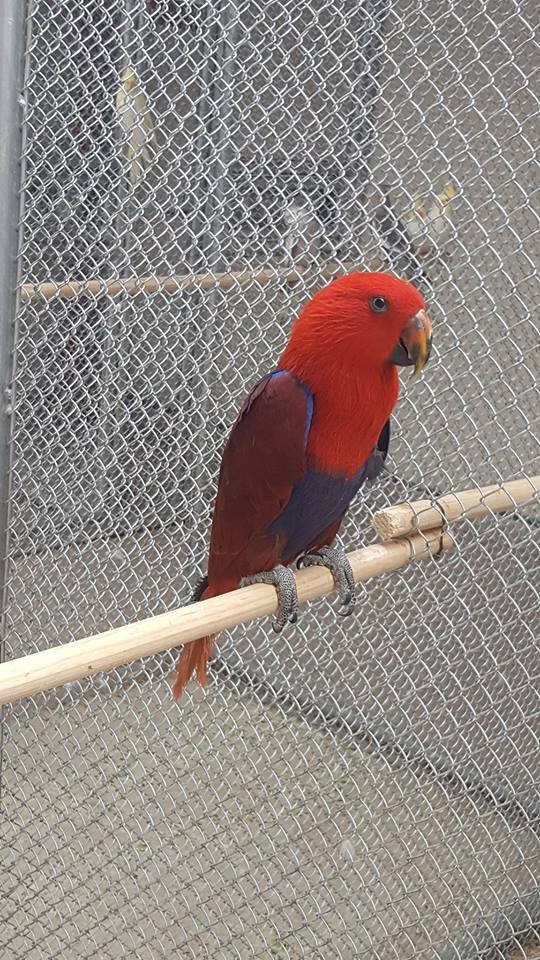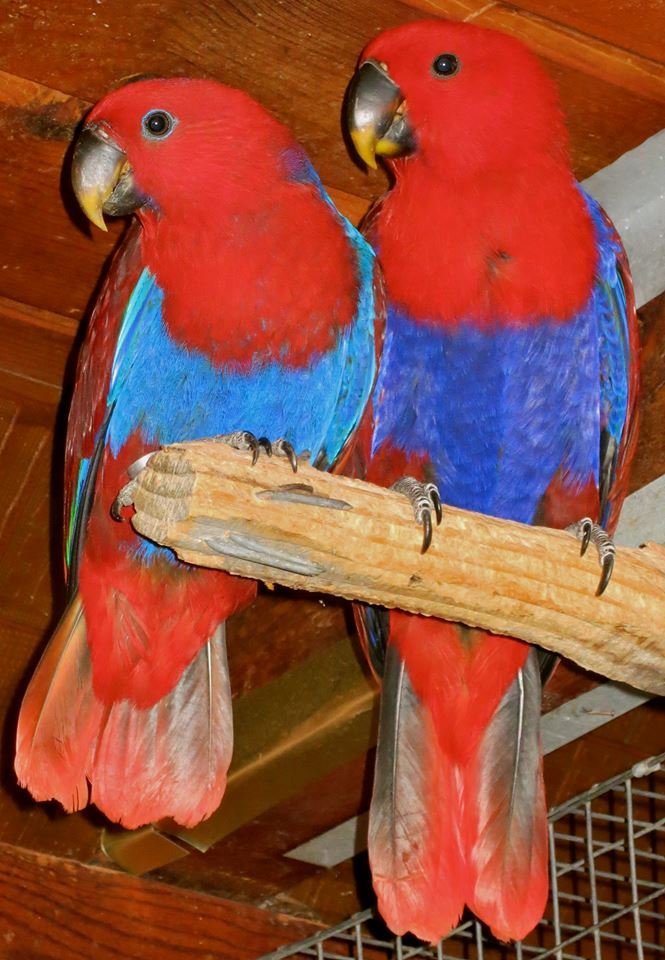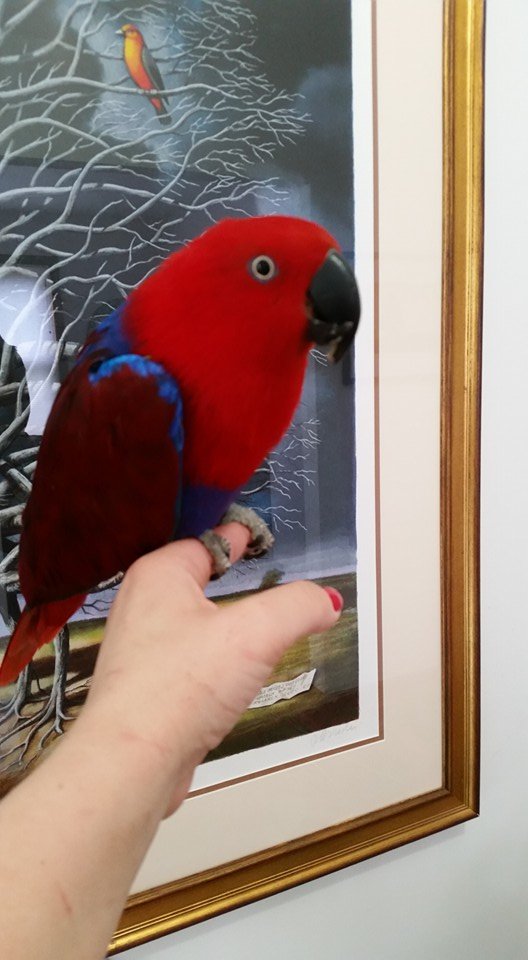Eclectus Babies
Length: 33-37 cm
Weight: 470–525 gm
Banded: Yes
DNA Sex: Males/Females
Original price was: 1,700.00$.1,600.00$Current price is: 1,600.00$.
Description
Description
We have the following electus parrots at our store Solomon Eclectus Parrots, Grand Eclectus and Red sided eclectus
The Eclectus Parrot is unusual in the parrot family for its marked visible light sexual dimorphism in the colours of the plumage. A stocky short-tailed parrot, it measures around 35 cm (14 in) in length. The male is mostly bright green with a yellow-tinge on the head. It has blue primaries, and red flanks and underwing coverts. Its tail is edged with a narrow band of creamy yellow and is dark grey edged with creamy yellow underneath, and the tail feathers are green centrally and bluer as they get towards the edges. The grand Eclectus female is mostly bright red with a darker hue on the back and wings. The mantle and underwing coverts darken to a more purple in colour, and the wing is edged with a mauve-blue. The tail is edged with yellowish-orange above and is more orange tipped with yellow underneath. The upper mandible of the adult male is orange at the base fading to a yellow towards the tip, and the lower mandible is black. The beak of the adult female is all black. Adults have yellow to orange ireses and juveniles have dark brown to black irises. The upper mandible of both male and female juveniles are brown at the base fading to yellow towards the biting edges and the tip.
Diet of the eclectus parrots
The diet of the eclectus parrots in the wild consists of mainly fruits, wild figs, unripe nuts, flower and leaf buds, and some seeds. In captivity, they eat most fruits including mangos, figs, guavas, bananas, malons, stone fruits, grapes, citrus fruits, pears, apples, pomegranate, and papaya (pawpaw).
Breeding
In its natural habitat, the eclectus parrots nests within hollows in large, emergent rainforest trees. Suitable hollows are at a premium and the hen vigorously defends her chosen nesting site from other females (perhaps even fighting to the death), remaining resident at ‘her tree’ for up to 11 months of the year, rarely straying from the entrance to her hollow and relying on multiple males to feed her via regurgitation. Males may travel up to 20 km to forage and up to five males will regularly provide food for each female, each competing with the others for her affections and the right to father her young.





Reviews
There are no reviews yet.